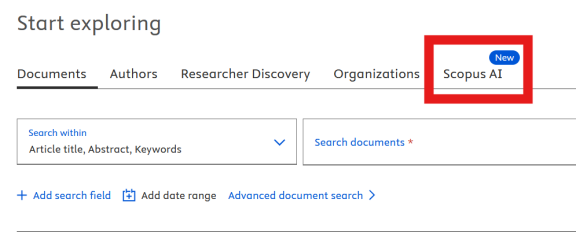Purpose of this Guide
This guide is intended for undergraduate students to help support their decision-making around and application of AI tools. This guide covers basic definitions important to understand, some of the ethical considerations of utilizing AI, common issues that can occur when using AI tools, best practices for students, and a selected list of AI tools.
These sections are separated into tabs based on their topics, so navigate to the section(s) that interests you. This guide doesn't have to be read in its entirety, or in chronological order.
Introduction to AI
Definitions
It is important to be specific when discussing AI, as this term is very generalized and can refer to many things. A typical Google Search utilizes AI to rank your results and give you suggested additional searches. ChatGPT also utilizes AI to generate entirely new content. Therefore, it's helpful to build an understanding of the key terms to help differentiate between Chatbots, Recommendation Systems, and Retrieval-Augmented Generation.
Artificial Intelligence (AI): Technology that enables computers and machines to simulate human intelligence and problem-solving capabilities
Machine Learning: A subset of AI that focuses on teaching machines to learn from data without being explicitly programmed. It uses algorithms that identify patterns and make predictions or decisions based on data.
Deep Learning: A subset of machine learning that uses neural networks with many layers (hence “deep”) to analyze data and recognize complex patterns.
Generative Artificial Intelligence (GenAI): AI that utilizes deep learning and training data to generate original, statistically probable outputs based on prompts
Chatbot: A computer program that simulates human conversation with a user. Chatbots do not always use AI, but applications like ChatGPT use natural language processing (NLP) to interpret complex queries and make interactions more conversational
- For Example:
- Many icons that pop-up to provide customer service on websites are chatbots. Note that this is not always true, for instance, in the Library Ask Us portal, you're talking to a real person!
Recommendation System: A recommendation system is an artificial intelligence or AI algorithm, usually associated with machine learning, that uses Big Data to suggest or recommend additional products to consumers
- For Example:
- Streaming Services' recommended TV shows and movies
- Online Retailers' recommended products
Retrieval-Augmented Generation: is a technique for enhancing the accuracy and reliability of generative AI models by combining the capabilities of LLMs and information fetched from specific and relevant data sources
- For Example: Tools that include search results in their generated answers
- Perplexity
- Consensus


